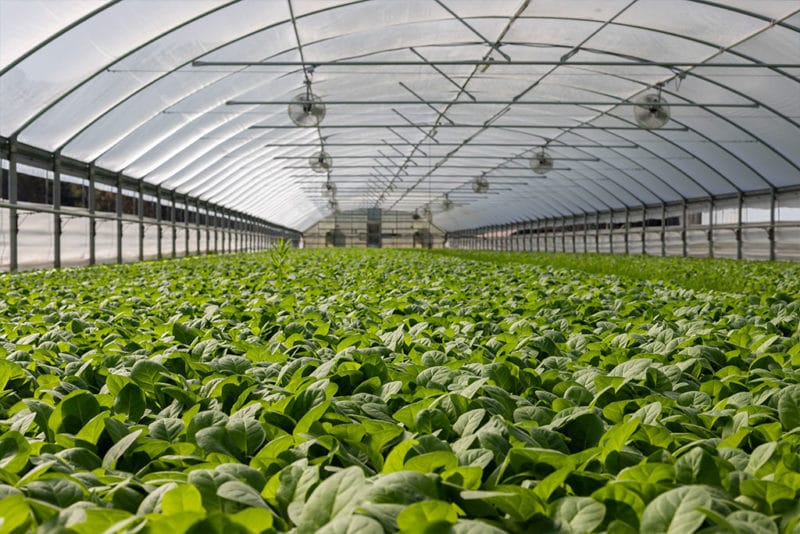Commercial Grow Room Design Plans | How To’s
September 15, 2020 / 9 mins read

The cornerstone to creating any commercial grow facility, such as those needed in cannabis cultivation, requires a well-thought-out layout and optimum mechanical systems. As an example, with an indoor cultivation facility design the mistake of under-sizing the environmental controls are an all too common occurrence. The cultivation facility design must feature an HVAC system with redundancy and a backup power source. In addition, they should be cleanable outside of the grow rooms and be easy to repair. The units remove massive amounts of moisture caused by the abundant cannabis plant growth, so it is imperative that they have properly sized units to meet the needs of the grow room’s space.
Within the confines of the indoor grow facility, air circulation keeps the plant’s canopy slightly swaying because of the artificial breeze. The upper flowers in a vertical grow are then prevented from getting excessively hot. Clearly, the environmental controls are of paramount importance or cannabis crop loss can occur and pests from clones can easily enter the facility if things are not kept at consistent levels. Engineering and installation are one of the biggest investments (if not the biggest) of any commercial grow room design plan. You cannot cut corners, or the financial losses quickly become insurmountable.
What’s Required for a Grow Facility Design?
A craft grower is a facility that is licensed by the Department of Agriculture to cultivate, dry, cure, and package hemp or marijuana. They each have their own commercial marijuana grow room design plans but for licensing as a craft grow, they must contain at least 5,000 square feet of canopy space for the cannabis plants during the flowering stage of their life cycle. The Department of Agriculture can authorize either an increase or decrease of space for the flowering cultivation stage which occurs in increments of 3,000 square feet depending on the market need, the craft grow house design capacity, and the history of the licensee’s compliance or noncompliant issues. The maximum set forth is 14,000 square feet for cultivation when the plants enter their flowering stage. However, the commercial grow room design plan laid forth by the USDA encompasses all the growth stages of the cannabis plant which drives home the importance of them being secured and enclosed in an indoor cultivation facility design.
The Typical Craft Grow Facility — Room Division
Standard commercial grow room design plans does vary depending on your crop and your cultivation practices. Will you be using hydroponics or standard soil medium? Typically, indoor cannabis cultivation has at least eight spaces or more flower rooms with a standard measurement of 30 feet across and between 50 to 100 feet long. Dividing the indoor grow facilities into individual rooms allows each one to become self-contained with their own temperature controls. Needed pest treatment practices become easier. Also, the workflow is reduced to doable and digestible chunks. The cultivation facility design that consists of various rooms affords various planting and harvest times. The rooms are also easily quarantined from the rest of the facility to control any pest or mold outbreak so only a small percentage of the crop is damaged or destroyed and the entire grow operation does not perish. A standard marijuana grow facility design with room division allows you to test the efficiency of Co2 injection, factor in various types of lighting, and monitor the nutrient regime that occurs. Another room can also house the same cultivars but have them grown under different variables, so you obtain reliable data and make any needed protocol changes.
Engineering the Warehouse Grow Room Design
Any engineer used to create a craft grow facility should have experience with indoor plant cultivation facilities. The design of the commercial grow room will feature the necessary environmental controls, plumbing, and electrical requirements, backup power system, and typically HVAC redundancy. To achieve all of this, most will hire various engineering firms that specialize in the key areas to make the commercial grow room a success.
HVAC of the Cannabis Grow Facility Design
The crucial component of any commercial grow op setup remains the HVAC systems used. The HVAC company will gather the needed information from the cultivation consultant and engineer so they can focus on the necessary electrical use, Co2 requirements, air circulation, purification, and moisture quantity that is forecast to be generated at the site. They will then work to create the ideal environmental settings needed for all the various stages of the marijuana or hemp growth cycles to effectively control the conditions of the indoor grow facility.
At Mintropy, our engineers will consider the following for your craft grow facility design:
- Emergency Co2 evacuation
- Carbon filtration utilization factoring in the exhaust path needed to account for the necessary odor control needed at the grow facility
- Utilize a hydrogen peroxide filtration system in the return air pathways to further reduce airborne pathogens
- Include latent load in cooling load calculation to maintain the craft grow facility’s crucial environmental balance
- Factor in the wastewater being released into the sanitary system and its dilution
- Positively pressurize each grow room while keeping the entire space under negative pressure
- Maintain dialogue every step of the way with engineers and others in jurisdiction authority
The Commercial Cannabis Craft Grow Industry
The commercial cannabis industry is constantly changing and evolving. Without a doubt, the one crucial component of any commercial grow op setup remains the HVAC system. Standard commercial HVAC companies often lack the experience needed to provide the correct environmental conditions required by a craft grow facility.
In the past, 1,000 tons of refrigeration capacity was needed for 80,000 to 10,000 square foot facilities such as a data center, hospital, or school. A grow room requires similar, but they are dramatically different. A grow room has a much higher latent load (moisture/dehumidification load). The humidity in the grow space must undergo more cooling to effectively condense the humidity off the cooling coil. A much colder chilled water temperature is needed. When growing cannabis, the lights-out mode means that growers must dry the air and then reheat it, so the grow room does not start to over-cool. The reheat can use free energy obtained from the dehumidification process when the right HVAC system is used. Having an experienced company, such as Mintropy, handle such key specifics is necessary for the success of any commercial cannabis grow facility.
Importance of Picking an Experienced Craft Grow HVAC Company
As you can see, it is important to pick an experienced HVAC engineering company such as Mintropy who has the needed craft grow facility experience to achieve optimum success when creating a design layout and installing the needed mechanical systems. You’ll want someone who can explain your HVAC options, costs, limitations, and advantages of the various systems for your specific commercial craft grow room requirements. Also, you’ll want to look at modular, scalable, and redundancy HVAC control approaches for your craft facility so you know and understand your options.
If you have any questions, please contact us today.
Need help with your project? Let’s get in touch!
Lorem ipsum dolor sit amet, consectetuer adipiscing elit.


